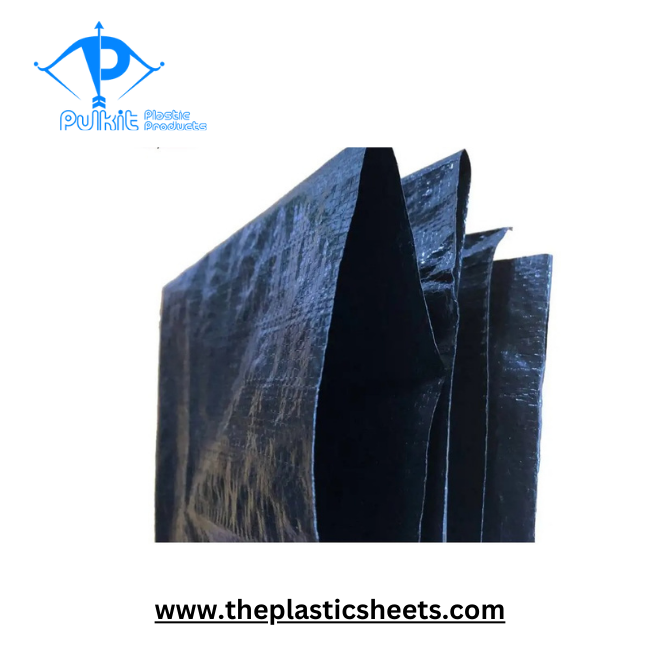
When it comes to creating durable and reliable water containment systems, HDPE pond liners stand out as an exceptional choice. Whether for aquaculture, landscaping, or industrial applications, these liners offer unparalleled benefits, ensuring longevity, environmental safety, and cost-effectiveness. In this guest post, we will explore everything you need to know about HDPE pond liners, their advantages, applications, installation process, and answers to common questions.
What Are HDPE Pond Liners?
High-Density Polyethylene (HDPE) pond liners are synthetic membranes designed to line ponds, reservoirs, and other Pulkit Plastic Products water containment systems. Made from a tough, UV-resistant polymer, these liners are built to withstand extreme environmental conditions while providing a leak-proof solution for water storage. Their high tensile strength and chemical resistance make them a popular choice across various industries.
Advantages of HDPE Pond Liners
1. Durability
HDPE pond liners are incredibly durable, with resistance to tears, punctures, and environmental degradation. They can withstand extreme temperatures, ensuring long-term functionality without compromising structural integrity.
2. Environmental Safety
These liners are non-toxic and safe for aquatic life, making them ideal for fish ponds and wildlife habitats. Their impermeable nature prevents chemical leaching, protecting the surrounding ecosystem.
3. UV Resistance
HDPE Liner for pond are designed to resist UV degradation, ensuring longevity even when exposed to prolonged sunlight. This makes them an excellent choice for outdoor applications.
4. Cost-Effective
Compared to other liner materials, HDPE is cost-effective due to its long lifespan and minimal maintenance requirements. While the initial investment might be slightly higher, the reduced need for repairs and replacements makes it a budget-friendly option over time.
5. Flexibility and Customization
HDPE liners can be manufactured to fit ponds of various shapes and sizes, ensuring a perfect fit for your specific needs. Their flexibility makes installation easier, even in irregularly shaped water bodies.
Common Applications of HDPE Pond Liners
1. Aquaculture
In fish farming and aquaculture projects, HDPE liners provide a safe and controlled environment for aquatic species. Their non-toxic properties ensure the health and growth of fish, shrimp, and other marine life.
2. Agriculture
Farmers use HDPE pond liners to create reservoirs for irrigation, ensuring consistent water supply even during dry seasons. Their impermeable nature prevents water loss due to seepage.
3. Landscaping
For decorative ponds, fountains, and water gardens, HDPE liners offer a sleek and waterproof base. Their flexibility allows for creative designs in landscaping projects.
4. Mining and Industrial Applications
In mining and industrial operations, HDPE liners are used to contain hazardous materials, preventing contamination of soil and groundwater. Their chemical resistance makes them ideal for such demanding environments.
5. Wastewater Management
HDPE Pond with liner are widely used in wastewater treatment plants to contain and manage effluents effectively. Their impermeability ensures no leakage, protecting the environment.
Installation Process of HDPE Pond Liners
1. Site Preparation
-
Clear the area of debris, rocks, and vegetation.
-
Level the ground and remove sharp objects that could damage the liner.
2. Measurement and Cutting
-
Measure the dimensions of the pond or containment area.
-
Cut the HDPE liner to fit the specific shape and size, leaving extra material for anchoring.
3. Placement
-
Carefully lay the liner over the prepared area, ensuring it fits snugly.
-
Avoid overstretching or wrinkling the liner during placement.
4. Seaming
-
For larger ponds requiring multiple sheets, weld or tape the seams to create a watertight barrier.
-
Professional-grade seam welding ensures durability and prevents leaks.
5. Anchoring
-
Secure the edges of the liner with soil, rocks, or anchor trenches to keep it in place.
6. Filling
-
Gradually fill the pond with water while monitoring for any adjustments needed to the liner.
Maintenance Tips for HDPE Pond Liners
-
Regular Inspections: Periodically check for signs of wear, tears, or punctures.
-
Cleaning: Remove algae, debris, or sediments that may accumulate on the liner surface.
-
Preventive Measures: Avoid dragging heavy objects across the liner and use padding in high-impact areas.
-
Timely Repairs: Address small damages immediately to prevent further issues.
Conclusion
HDPE pond liners are a reliable and versatile solution for water containment across various industries. Their durability, environmental safety, and cost-effectiveness make them an excellent investment for projects ranging from aquaculture to landscaping. By choosing HDPE Pond liner sheet, you can ensure a long-lasting, efficient, and sustainable water management system. Whether you’re building a backyard pond or managing a large-scale industrial project, HDPE pond liners deliver unmatched performance and peace of mind.
Frequently Asked Questions (FAQ)
1. What is the lifespan of an HDPE pond liner?
HDPE pond liners can last 20-50 years, depending on the thickness, environmental conditions, and maintenance practices. Their UV resistance and durability contribute to their long lifespan.
2. Can HDPE pond liners be used for fish ponds?
Yes, HDPE liners are non-toxic and safe for aquatic life, making them ideal for fish ponds. They prevent water loss and create a healthy environment for fish and other aquatic organisms.
3. Are HDPE pond liners eco-friendly?
HDPE liners are environmentally friendly due to their recyclability and non-toxic properties. They help prevent soil and water contamination, protecting ecosystems.
4. How do I choose the right thickness for an HDPE liner?
The required thickness depends on the application. For decorative ponds, 20-30 mils are sufficient, while industrial or hazardous containment systems may require 60-100 mils for added durability.





Leave a Reply